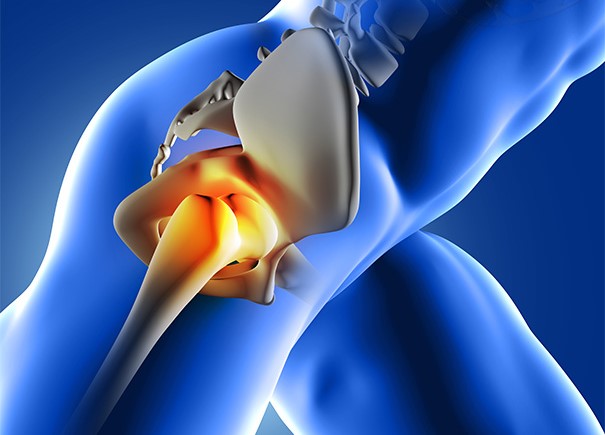Schedule An Appointment With Us
Are Your Symptoms Affecting Your Quality Of Life?
Consult our MOH-accredited hip arthroscopy specialist for a comprehensive diagnosis of your condition & a personalised treatment plan.
Hip arthroscopy is a minimally invasive surgical procedure used to diagnose and treat a variety of hip joint problems, such as tears of the labrum, loose bodies, or hip impingement. This technique involves inserting a small camera, called an arthroscope, into the hip joint to guide the surgeon in repairing or removing damaged tissue.
MBBS
MRCSEd
MMED (Ortho)
FRCSEd

Hip arthroscopy is a surgical technique designed to address and treat hip problems in a minimally invasive way. This procedure involves the use of an arthroscope, a slender camera, which allows the hip surgeon to view the hip joint without necessitating large incisions through the skin and soft tissues. The arthroscope’s imagery is displayed on a video monitor, guiding the hip surgeon in manoeuvring miniature surgical instruments within the joint.
Hip arthroscopy is considered when non-surgical treatments, such as rest, physical therapy, medications, and injections, fail to alleviate hip-related conditions. The procedure is particularly beneficial for addressing issues that damage the labrum, articular cartilage, and other soft tissues surrounding the joint. Some common reasons for undergoing hip arthroscopy include:
Effective planning leads to successful hip arthroscopy. This involves several preparatory steps to ensure patient safety and optimal surgical outcomes.
The surgical procedure of hip arthroscopy involves several key steps:
1. Positioning and Traction
Initially, the patient’s leg is placed in traction, meaning the hip is gently pulled away from the socket. This allows the hip surgeon to insert instruments and view the entire joint.
2. Incision and Arthroscope Insertion
The hip surgeon makes a small keyhole incision, or portal, in the skin to insert the arthroscope into the hip. Sterile fluid is pumped into the joint to inflate it for better visualisation.
3. Joint Evaluation
Images from the arthroscope, displayed on a video monitor, assist the hip surgeon in evaluating the joint and identifying any damage.
4. Treatment Procedures
Depending on the diagnosis, the hip surgeon may perform a variety of procedures, such as repairing the torn labrum, trimming damaged cartilage, reshaping bone structures for better fit, and removing inflamed tissues. This is done using specialised instruments inserted through separate keyhole incisions.
5. Instrumentation and Techniques
Hip surgeons use specialised instruments for tasks like shaving, cutting, grasping, burring, and suture passing. In some cases, implants (such as suture anchors) or grafts may be used.
6. Closure
After the procedure, incisions are typically stitched or covered with skin tapes, followed by an absorbent dressing.
The length of the procedure varies depending on the extent of the damage and the number of issues addressed.
Hip arthroscopy offers several advantages, particularly when compared to traditional open surgery.
Minimally Invasive Technique |
The use of small incisions results in less disruption to the surrounding tissues. This minimally invasive approach typically leads to reduced postoperative pain and joint stiffness. Smaller incisions also mean less noticeable scars post-surgery. |
Shorter Recovery Time |
Patients often experience a quicker recovery period, facilitating a faster return to daily activities and work. |
Less Pain and Joint Stiffness |
Smaller incisions and less tissue trauma contribute to decreased pain and improved joint mobility post-surgery. |
Enhanced Accuracy and Targeted Treatment |
The arthroscope provides high-definition, magnified views of the joint structures, allowing for precise diagnosis and treatment. The hip surgeon can directly address specific problems within the hip joint, such as labral tears, cartilage damage, or removal of loose bodies, with enhanced accuracy. |
Schedule An Appointment With Us
Consult our MOH-accredited hip arthroscopy specialist for a comprehensive diagnosis of your condition & a personalised treatment plan.
While hip arthroscopy is generally considered safe, like any surgical procedure, it does carry some risks and potential complications.
While these complications may occur, the procedure generally carries a lower risk of infections and other issues compared to open surgeries.
While hip arthroscopy is often an outpatient procedure, requiring no overnight hospital stay, some cases might necessitate a short hospital stay, especially if the patient has certain health conditions.
The recovery process following hip arthroscopy involves several aspects:
The long-term outlook after hip arthroscopy is generally positive, with many patients returning to full, unrestricted activities. The specific recovery time and outcome depend on the type of hip damage treated and the patient’s overall health.

MBBS
MRCSEd
MMED (Ortho)
FRCSEd
With over 18 years of experience, Dr Poh Seng Yew is an orthopaedic surgeon specialising in hip, knee, shoulder and elbow surgery, sports medicine, and trauma surgery.




Weekdays: 9.00am – 5.00pm
Saturdays: 9.00am – 1.00pm
Sundays and Public Holidays: Closed
Your symptoms shouldn’t affect your quality of life or disrupt daily activities. Reach out to our friendly clinic staff today & schedule a consultation.
The duration of pain following hip arthroscopy varies but is generally temporary. Most patients experience pain reduction within a few weeks. Persistent or severe pain should be discussed with our hip surgeon for tailored management.
Hip popping can occur post-arthroscopy as the joint adjusts to the changes made during the procedure. If the popping is painless, it’s often a normal part of the healing process. Any painful or persistent popping should be evaluated by our hip surgeon to ensure optimal recovery.
Adherence to the prescribed rehabilitation plan can help lead to a swift recovery. Following your hip surgeon’s guidance on activity levels and using medication as directed can also speed up the recovery process.
Arthroscopic incisions typically heal within a few weeks. Follow post-operative care instructions, such as keeping the area clean and dry, to promote healing. Any concerns about healing can be addressed with our hip surgeon.